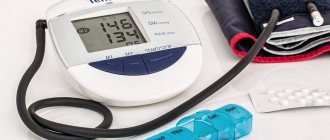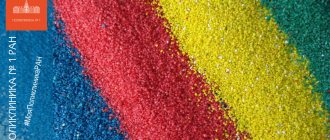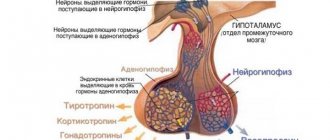Purpose of a pulse oximeter on the finger Fingertip Pulse Oximeter
The FingertipPulseOximeter is an innovative portable medical device for rapid, accurate and continuous measurement of pulse rate and peripheral arterial hemoglobin oxygen saturation in a non-invasive manner. (The saturation of hemoglobin in arterial blood with oxygen is called saturation (SaO2). SaO2 values > 94% are considered normal. At lower values, oxygen therapy is used.) The pulse oximeter is intended for self-diagnosis of hypoxia at home.
Measurement:
- Clean the surface of the device using a cotton pad with rubbing alcohol or an alcohol wipe. Do this before each use;
- Let the oximeter dry or wipe it with a clean, dry cloth;
- Insert your finger into the oximeter as shown in the diagram below. If your fingers are too thin or cold, insert your thumb or middle finger as deeply as possible into the testing probe to get a correct measurement. Make sure your finger is in the correct position between the rubber pads;
- Pinch your finger;
- Click on the button to get the test result. At this time, try to sit quietly, do not shake your hand or fingers;
- The result will appear on the screen. If, instead of correctly displaying data on the screen, you see incomprehensible symbols, then remove your finger from the oximeter and reinsert it;
- After 5 seconds of inactivity, the device will automatically turn off.
Attention!
Drugs such as dopamine, procaine, prilocaine, lidocaine, and butacaine can negatively affect the accuracy of the SpO2 measurement. These also include various lighting sources (lamps, infrared heaters, direct sunlight, etc.).
Scope of application of the pulse oximeter
A finger pulse oximeter is used to measure heart rate and oxygen saturation of hemoglobin in the blood through a finger. The device can be used at home, in hospitals (by therapists, surgeons, anesthesiologists, pediatricians, resuscitators and other specialists), in social and medical organizations, to assess physical condition during sports. Use a pulse oximeter before or after doing any exercise. Use during training is not recommended. The device is also used by climbers, patients (recuperating at home or those who may need first aid), the elderly, people working more than 12 hours a day, athletes and people working in confined spaces, etc. The device is not adapted for continuous monitoring of the patient's condition.
Precautions when using a pulse oximeter
1. Do not use the pulse oximeter with MRI or CT equipment.
2. Explosion Hazard: Do not use the pulse oximeter near an open flame.
3. This pulse oximeter is an aid to assess the patient's condition. Only a doctor can make a correct diagnosis based on other symptoms and clinical studies.
4. Constantly check the condition of the patient’s skin at the site where the pulse oximeter is attached to avoid disruption of blood circulation.
5. While the pulse oximeter is in operation, do not stretch the connecting tape, as this may cause inaccurate readings or skin irritation.
6. Please read the instructions carefully before using the device.
7. The pulse oximeter is not equipped with an alarm signal when SPO2 drops and is not suitable for continuous monitoring of this value.
8. If you use the device for a long time, you may need to periodically change the location of the sensor. At least every 4 hours, you should change the finger on which the pulse oximeter is installed, and also check the condition of the patient’s skin and the correct installation of the sensor.
9. To avoid loss of measurement accuracy, do not autoclave the device, sterilize it with ethyl alcohol, and avoid immersing the device in liquid.
10. If there is a significant level of dysfunctional hemoglobins (for example, carboxyl hemoglobin or methemoglobin), the device readings may not be accurate.
11. Intravascular dyes such as indocyanine green or methylene blue can also lead to inaccurate readings.
12. SpO2 may not be accurate enough in high light conditions. Please do not expose the device to direct sunlight.
13. Improper use of the pulse oximeter may result in inaccurate readings.
14. Medical devices that emit high frequency signals (defibrillator) may cause interference and affect the accuracy of the pulse oximeter readings.
15. If the sensor and blood pressure cuff are on the same arterial catheter or intravascular line, the readings may also be inaccurate.
16. Hypotension, severe vasoconstriction, severe anemia, or hypothermia may also lead to inaccurate readings.
17. Readings may also be inaccurate after stimulating measures during cardiac arrest or when the patient is in a state of tremor.
18. Dark or bright nail polish and gel polish may result in inaccurate SpO2 readings. In this case, it is better to take the measurement on the earlobe, after first removing the earring, if any.
19. Do not look into the testing probe while the device is operating, as the intense infrared light is harmful to the eyes.
Follow generally accepted practices and guidelines for the disposal of this type of device, including batteries.
…
No. 3. What pulse oximeter readings are normal?
• Saturation of 100% is an unrealistic indicator, since even in a completely healthy person, all hemoglobin molecules cannot capture all 4 oxygen molecules.
• The norm for men and women is 95-99%. • The norm for older people is slightly lower – 94-98%. • The norm for newborns and small children is 93-96%. • For smokers and people with chronic diseases of the respiratory system, the rate is lower - 92-95%. • When infected with coronavirus, hospitalization is indicated when saturation is below 93%. • Saturation less than 90% is a reason to urgently seek medical help. The reason is not always the coronavirus. There are many other equally serious and dangerous diseases.
Possible problems and their solutions
| Problem | Possible reason | Solution |
| SPO2 and HR are unusual or not displayed at all | 1. The finger is not positioned correctly 2. The patient's oxyhemoglobin level is too low | 1. Try again. Place your finger with your nail facing up 2. Repeat several times. If you are sure that the device is in good condition, consult a doctor immediately |
| SPO2 and heart rate readings are unstable | 1. The finger is not placed deep enough 2. The finger trembles or the patient moves | 1. Place your finger deeper into the pulse oximeter 2. Do not move |
| The device does not turn on | 1. Batteries are dead 2. Batteries are not installed correctly 3. The device is damaged | 1. Replace the batteries 2. Install the batteries correctly 3. Contact the service center |
| The screen suddenly went dark | 1. The device automatically turned off 8 seconds after no signal 2. Not enough power | 1. Everything is good 2. Replace batteries |
Symbols and their meaning
| Peripheral oxygen saturation (SpO2) – saturation of hemoglobin with oxygen |
| Heart rate (HR) |
| Low battery indicator |
| Serial number |
Place your finger in the pulse oximeter with the nail facing up!
Note
Please use medical alcohol to clean the rubber surface inside the pulse oximeter and the finger itself before and after taking measurements. (The rubber surface inside the pulse oximeter is non-toxic and does not cause allergies or other side effects.)
..
General description of the pulse oximeter
Saturation (saturation) of hemoglobin with oxygen is the percentage ratio between the concentration of oxyhemoglobin (HbO2 fully oxygenated hemoglobin) and the total content of hemoglobin in the blood (Hb + HbO2). In other words, this is the content of oxyhemoglobin in the blood. This is a very important physiological parameter for the respiratory and circulatory systems. Many respiratory diseases reduce the oxygen saturation of hemoglobin in a person's blood. In addition, factors such as dysfunction of automatic organic regulation caused by anesthesia, trauma from major surgery, and other medical interventions can also cause a person's hemoglobin oxygen saturation to decrease. Thus, this leads to the appearance of symptoms such as migraines, vomiting, and asthenia in patients. Therefore, such a parameter as the degree of oxygen saturation of hemoglobin is a very important medical indicator.
The advantages of a finger-worn pulse oximeter are its compact size, low power consumption, ease of use and portability. The patient only needs to place one finger in the photoelectric sensor, and the device will immediately show the degree of oxygen saturation of hemoglobin in the blood. The accuracy of this method has been proven in clinical studies.
Pulse oximeters with tonometer two in one, which one to choose
The equipment is divided into two main subtypes:
- for sports purposes – used during training, allows you to control heart rate and determine the intensity of exercise;
- medical - used for patients with a certain type of disease, blood oxygen levels and pulse are measured.
Modern models of pulse oximeters additionally monitor changes in blood pressure levels. Most products are made in the form of fitness bracelets. They are not medical devices, but only monitor indicators. Measurement results may have slight errors. When choosing suitable equipment, you need to pay attention to the availability of:
- pedometer – necessary for counting steps and assessing the total load;
- accelerometer - used to calculate movement speed and position in space;
- tonometer – measures blood pressure with an error of up to 10% (if you need accurate information, it is better to use medical devices);
- heart rate monitor – calculates heart rate at rest and during exercise.
Most fitness bracelets have a built-in function for determining the oxygen content in the blood, some have “SOS” functionality for sending a request for help to relatives or emergency responders. It is better to purchase such devices in specialized medical equipment stores; when purchasing, you need to make sure that the kit comes with instructions for use in Russian.







